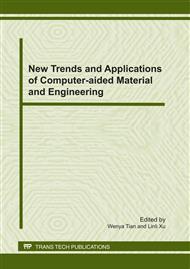p.11
p.16
p.21
p.26
p.31
p.36
p.41
p.46
p.51
Empirically-Sourced Mechanical Behaviors of Pneumatic Artificial Muscles for Compensation-Based Controls
Abstract:
As a skeletal muscle-like actuator, PAM possesses many unique advantages. They include compliance and high power-to-weight ratio, which make it an ideal actuator for robotic and powered exoskeleton applications. But its flexible braided mesh shell and the compressibility of air make PAM much more difficult to model and control compared to traditional actuators. In this work, the mechanical properties of the McKibben PAM produced by Festo are examined, tested and discussed. The results demonstrate the muscle-like property of PAM and its strong non-linear and hysteresis behaviors. A simple law between the areas of the hysteresis and pressure is proposed, and the relationships of the areas of the hysteresis, external load and the continuous working time are studied. Further, changing the PAM length that is smaller than 0.4 mm may lead to the “crawl” phenomenon. Finally, the empirical results can be used in compensation-based controls of the hysteresis in the McKibben PAM.
Info:
Periodical:
Pages:
31-35
Citation:
Online since:
January 2011
Authors:
Price:
Сopyright:
© 2011 Trans Tech Publications Ltd. All Rights Reserved
Share:
Citation:


